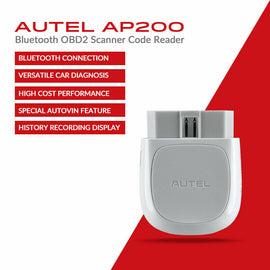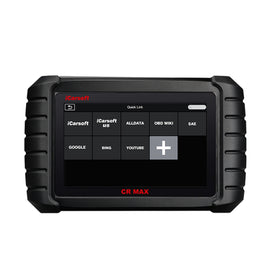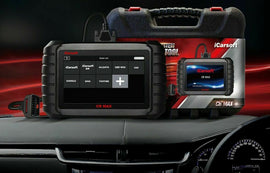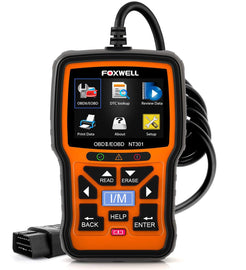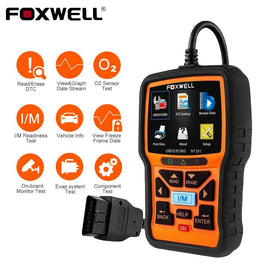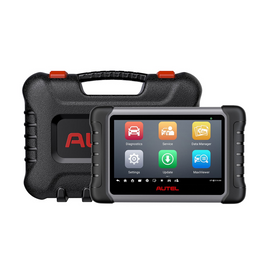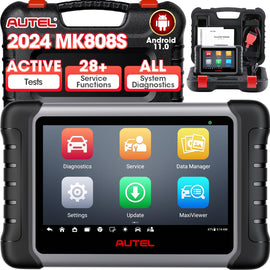When you're using automotive diagnostic tools, it’s not just about having them with you in the car; proper care and regular maintenance are just as crucial. Whether you’re a professional mechanic, a car enthusiast, or simply a vehicle owner relying on OBD2 scanners for routine diagnostics, you depend on these tools for accurate readings.
Ensuring they are well-maintained directly impacts their performance and longevity.
If you’re unsure about what steps to take or how to care for your scanner properly, don’t worry. In this guide, we’ll walk you through essential tips for effective auto scan tool maintenance, covering everything from calibration routines to software management and storage best practices.
Let’s dive in!
Why Auto Scan Tool Maintenance Matters
Regardless of the kind of auto scan tool you use, maintenance is necessary. It helps you make sure that your vehicle diagnostic tool gives you reliable and accurate results consistently.
Additionally, the quality of your scan tool is determined by how often it is maintained. These gadgets connect to onboard systems, read error codes, and diagnose everything from engine problems to emissions.
Faulty diagnostics, distorted readings, or even irreparable damage can result from neglecting routine maintenance. As a result, it is imperative that you start using a structured auto scan tool maintenance plan right away.
Every device requires your attention in three crucial areas: calibration, software updates, and storage, regardless of whether you're using the best car diagnostic scan tool or a simple OBD2 scanner for car owners.
Best Tips for Car Diagnostic Tool Calibration
Every scan tool, even entry-level OBD2 scanners, benefits from routine accuracy checks; calibration isn't just for high-end, professional-grade equipment. Internal parts, such as sensors and voltage testers, may eventually deviate from their initial configurations, producing inaccurate or unreliable diagnostic readings.
Diagnostic tool calibration tips:
-
See the manufacturer's instructions. Calibration intervals are typically described in the manual for most brands. It is advised that professional-grade tools be calibrated every six to twelve months.
-
If there are calibration kits available, use them. Some manufacturers provide do-it-yourself calibration tools, especially for modules that read emissions or voltage data.
-
Use a benchmark tool to compare readings. If you think your scanner is malfunctioning, use a different calibrated scan tool in the same car.
It's important to make sure the diagnostic scan tool for Australian cars is calibrated and compliant with Australian vehicle standards (ADR compliance).
How to Manage OBD Scanner Software Updates?
Software updates are one of the most significant aspects of the OBD scanner. Times change, and therefore, companies roll out software updates for their tools too.
It can help improve overall performance, fix previous bugs, and ensure compatibility with the latest car models as well.
So, how to handle the software updates?
Here are a few tips:
-
Make an online product registration: This enables you to receive alerts when new firmware becomes available.
-
Install desktop software or apps: A lot of contemporary scan tools come with companion apps that notify you when new versions are available.
-
Regularly visit the websites of manufacturers: It's a good idea to manually check for updates every one to two months, even if you don't receive alerts.
-
Before updating, make a backup of your data: Certain expert scanners save user preferences or vehicle history, which might be cleared during an update.
Due to the frequent release of localised software protocols by automakers, software maintenance is particularly crucial for users of diagnostic scan tools for Australian vehicles.
Storage and Handling Best Practices
Even though they are durable, scan tools are still precise instruments that can deteriorate rapidly if handled or stored incorrectly. Both environmental preservation and physical protection are required.
Storage tips for longevity:
-
Keep in a Protective case: To avoid physical shocks, keep your scan tool in its original packaging or a padded case at all times.
-
Avoid Extreme Temperatures: Internal circuits and battery life may be impacted by prolonged exposure to extreme temperatures.
-
Control of Moisture: The tool may corrode or condense due to humidity. For extra protection, use silica gel packs in storage cases.
-
Unplug when not in use: If a scanner is left plugged into a car's OBD2 port, it may cause voltage spikes or drain the battery of the vehicle and the scanner.
In Australia's unpredictable climate, where hot summers and coastal humidity can be harsh on auto diagnostic equipment, these procedures are especially helpful.
Conclusion
Maintaining your auto scan tool is just as important as owning the right one. Regular calibration, timely software updates, and proper storage ensure that your diagnostic tool continues to deliver accurate results and supports your vehicle’s health over time.
Especially in Australia's climate, where environmental factors can be harsh, following a structured maintenance plan is essential. At Auto Lines Australia, we not only provide high-quality automotive diagnostic tools but also guide our customers with best practices to extend their tools' lifespan.
Invest in your tool’s care today to avoid costly errors tomorrow and keep your diagnostics sharp and reliable.
FAQs
1. How often should I calibrate my auto scan tool?
Most manufacturers recommend calibrating professional-grade scan tools every 6 to 12 months. Regular calibration ensures diagnostic accuracy and prevents false readings, especially in regions like Australia where environmental factors may impact internal components over time.
2. Why are software updates important for OBD2 scanners?
Software updates improve diagnostic accuracy, fix bugs, and ensure compatibility with newer vehicle models. Without regular updates, your OBD2 scanner may miss key data or provide outdated information that affects your repair decisions and car performance.
3. How should I store my diagnostic scan tool for longevity?
Store your tool in a padded case, away from extreme heat or humidity. Use silica gel packs to control moisture, and always unplug them after use. Proper storage protects internal circuits and extends your scanner’s operational lifespan.


